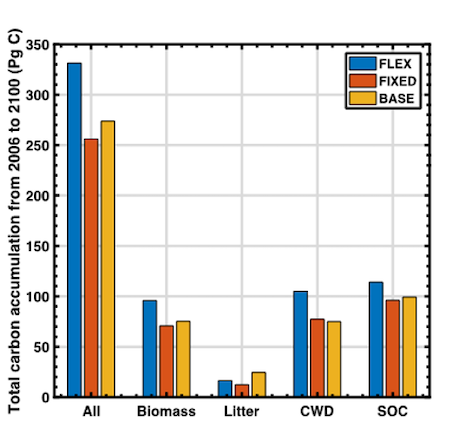

NGEE Arctic
Next-Generation Ecosystem Experiments
Advancing the predictive power of Earth system models through understanding
of the structure and function of Arctic terrestrial ecosystems
Impacts of Stoichiometry Traits on Carbon Accumulation using the E3SM Land Model
Impacts of Stoichiometry Traits on Carbon Accumulation using the E3SM Land Model
March 31st, 2020
Plant stoichiometric flexibility controls the CO2 fertilization effect on ecosystem carbon accumulation.
The Objective:
- Harmonize observed plant tissue C:N:P stoichiometry from more than 6,000 plant species using the Plant Functional Type (PFT) framework common in global land models.
New Science:
- The lack of reliable information about plant tissue stoichiometric traits remains a challenge to quantifying nutrient limitations on projected global C cycling.
- Using observed C:N:P stoichiometry and the flexibility of these ratios as emergent plant traits, observationally constrained fixed plant stoichiometry does not improve model estimates of present-day C dynamics compared with unconstrained stoichiometry.
- Adopting stoichiometric flexibility significantly improves model predictions of C fluxes and stocks.
- Twenty-first century simulations with RCP8.5 CO2 concentrations show that stoichiometric flexibility, rather than baseline stoichiometric ratios, is the dominant controller of plant productivity and ecosystem C accumulation in modeled responses to CO2 fertilization.
The Impact:
- This study is consistent with the previous consensus that nutrient availability will limit future land carbon sequestration but challenges the idea that imbalances between C and nutrient supplies and fixed stoichiometry limit future land C sinks.
- It is necessary to represent nutrient stoichiometric flexibility in models to accurately project future terrestrial ecosystem carbon sequestration.
Total and partitioned ecosystem carbon gain from 2006 to 2100 under RCP8.5 elevated atmospheric CO2 concentrations for the three ELMv1-ECA simulated scenarios (BASE, FIXED, FLEX).
